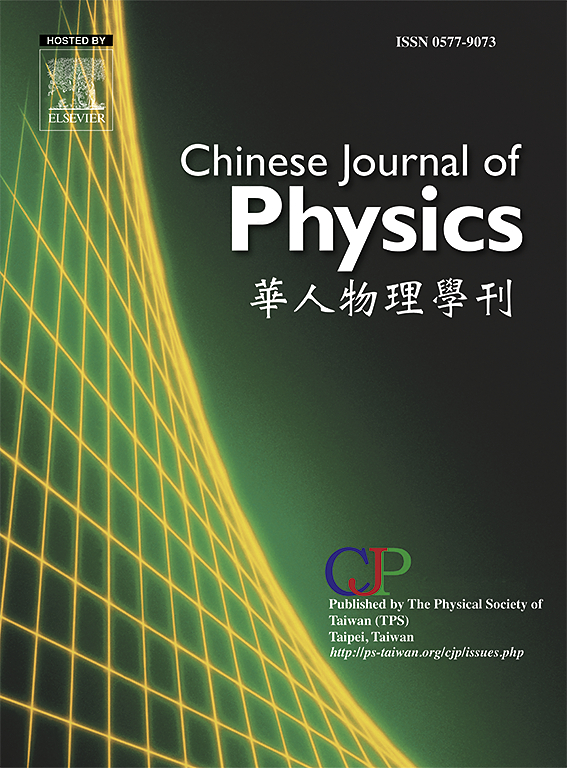Constraining radii and stability of neutron stars in 4D Einstein–Gauss–Bonnet gravity
IF 4.6
2区 物理与天体物理
Q1 PHYSICS, MULTIDISCIPLINARY
引用次数: 0
Abstract
In this paper, we have investigated the effects of Gauss–Bonnet extension on Einstein gravity in 4-dimensions. Four different equation of state, namely SLy4, APR4, FPS and Togashi are considered. These equation of state are used to model the massive neutron stars like PSR J0740+6620, PSR J1959+2048, PSR J1810+1744, PSR J2215+5135 and GW190814, which are in the neutron star-black hole mass gap. We have calculated the mass and radius through the curves for different values of the Gauss–Bonnet coupling parameter for four different equation of state to examine the upper limit of masses that fall within the mass gap. Our results show that the positive branch of is suitable for explaining the existence of massive neutron stars in the mass gap. Bondi’s and static stability criteria confirm the stability of these massive neutron stars. In fact, an increase in Gauss–Bonnet coupling strength improves the stability of these massive neutron stars. Furthermore, the surface redshift of these massive neutron stars is below the maximum limit, i.e. . Finally, we have used the curves with the observed masses to predict the radii of PSR J2215+5135, PSR J1959+2048, PSR J1810+1744, PSR J0740+6620 and GW190814 in general relativity and 4D Einstein–Gauss–Bonnet gravity. The predicted radii are in agreement with the constraints from the GW170817 event. Lastly, the maximum observed NS mass fits in the curves, implying that the range of should be somewhere around 0 to 5 .
四维Einstein-Gauss-Bonnet引力中子星的约束半径和稳定性
本文研究了四维空间高斯-博内扩展对爱因斯坦引力的影响。考虑了四种不同的状态方程,即sl4、APR4、FPS和Togashi。利用这些状态方程对处于中子星-黑洞质量缺口中的PSR J0740+6620、PSR J1959+2048、PSR J1810+1744、PSR J2215+5135和GW190814等大质量中子星进行了建模。我们通过M - R曲线计算了四种不同状态方程的不同高斯-邦尼特耦合参数值的质量和半径,以检验落在质量间隙内的质量上限。我们的结果表明,α的正分支适合于解释质量间隙中大质量中子星的存在。邦迪和静态稳定性标准证实了这些大质量中子星的稳定性。事实上,高斯-邦纳耦合强度的增加提高了这些大质量中子星的稳定性。此外,这些大质量中子星的表面红移小于最大极限,即Zs≤2。最后,我们利用观测质量的M - R曲线预测了PSR J2215+5135、PSR J1959+2048、PSR J1810+1744、PSR J0740+6620和GW190814在广义相对论和四维爱因斯坦-高斯-博内引力中的半径。预测的半径与GW170817事件的约束条件一致。最后,观测到的最大NS质量符合M - R曲线,这意味着α的范围应该在0到5 km2左右。
本文章由计算机程序翻译,如有差异,请以英文原文为准。
求助全文
约1分钟内获得全文
求助全文
来源期刊

Chinese Journal of Physics
物理-物理:综合
CiteScore
8.50
自引率
10.00%
发文量
361
审稿时长
44 days
期刊介绍:
The Chinese Journal of Physics publishes important advances in various branches in physics, including statistical and biophysical physics, condensed matter physics, atomic/molecular physics, optics, particle physics and nuclear physics.
The editors welcome manuscripts on:
-General Physics: Statistical and Quantum Mechanics, etc.-
Gravitation and Astrophysics-
Elementary Particles and Fields-
Nuclear Physics-
Atomic, Molecular, and Optical Physics-
Quantum Information and Quantum Computation-
Fluid Dynamics, Nonlinear Dynamics, Chaos, and Complex Networks-
Plasma and Beam Physics-
Condensed Matter: Structure, etc.-
Condensed Matter: Electronic Properties, etc.-
Polymer, Soft Matter, Biological, and Interdisciplinary Physics.
CJP publishes regular research papers, feature articles and review papers.
 求助内容:
求助内容: 应助结果提醒方式:
应助结果提醒方式:


